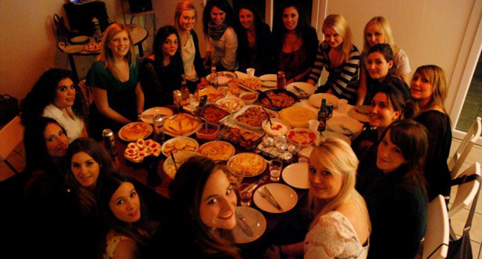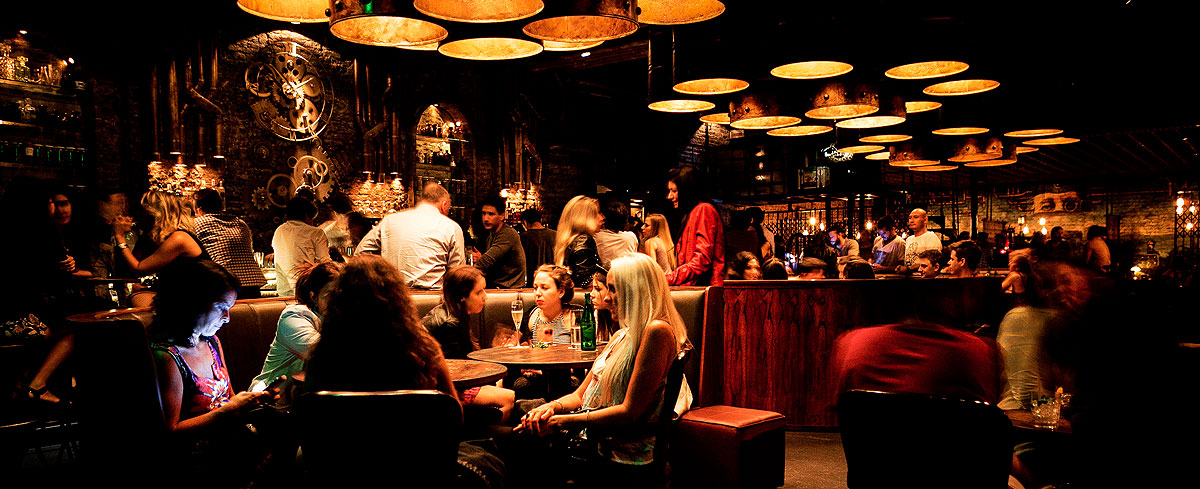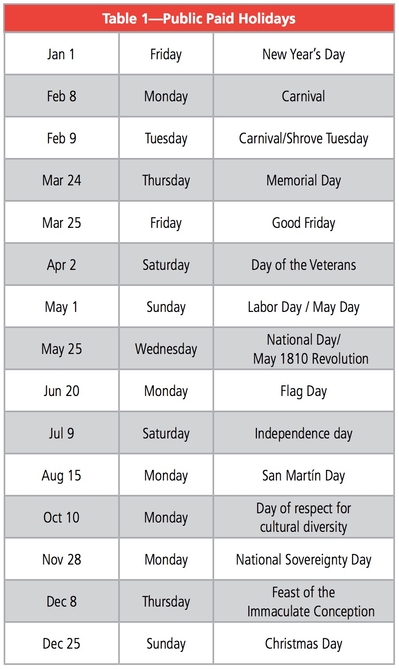What time do Argentines go to bed
As the vibrant metropolis of Buenos Aires awakens, its streets alive with the energy of bustling crowds, one question remains unanswered: What time do Argentines go to bed? The answer, dear readers, lies in the heart of the nation's captivating culture, where the rhythm of daily life dances to the beat of a different drummer. In this article, we venture into the nocturnal habits of Argentina's enigmatic inhabitants, exploring the cultural norms, social traditions, and individual preferences that shape their bedtime routines. From the late-night conversations and lingering café culture to the early-morning starts and siesta siesta siesta, we delve into the fascinating world of Argentinian bedtime customs.
What Time Do Argentines Hit the Hay? A Look at Argentinian Sleep Habits
There's no single answer to the question of what time Argentines go to bed. Sleep patterns in Argentina, like anywhere else, are influenced by a multitude of factors, including age, lifestyle, work schedules, and personal preferences. While generalizations are risky, we can explore some common trends and contributing factors.
Weekday vs. Weekend Sleep Schedules
On weekdays, Argentines, much like people in many other countries, tend to follow a more structured sleep schedule dictated by work and school commitments. This often means earlier bedtimes, usually between 11 pm and midnight, to ensure they can wake up reasonably early for their daily routines. However, it's not uncommon for younger people or those with less demanding jobs to stay up later.
The Role of Siesta Culture
Argentina's famous siesta culture plays a subtle role in sleep habits. While the midday siesta is less common in urban areas than in the past, the tradition of a short afternoon rest can influence evening sleep. People who take a siesta might find they can go to bed a little later than those who don't, as the afternoon break can help replenish energy levels.
Social Life and Nightlife
Argentina boasts a vibrant social scene, particularly in larger cities like Buenos Aires. Dinner is typically a later affair, and socializing often extends into the night, especially on weekends. This can push bedtimes later, often past midnight or even into the early hours of the morning, particularly for younger adults.
Regional Variations
Argentina is a large and diverse country, and sleep habits can vary across regions. Lifestyle differences in rural versus urban areas, for example, may influence when people typically retire for the night. Those in rural areas might have earlier bedtimes, dictated by agricultural rhythms and a less bustling nightlife.
Age and Sleep
As with any population, age is a significant factor in sleep patterns. Younger Argentines tend to stay up later than older Argentines, who generally prefer earlier bedtimes and more consistent sleep schedules. The demands of work, family, and social life naturally shift sleep patterns over a person's lifetime.
| Factor | Impact on Bedtime |
|---|---|
| Weekday vs. Weekend | Weekdays: Earlier (11 pm - midnight); Weekends: Later |
| Siesta Culture | Can allow for slightly later bedtimes |
| Social Life/Nightlife | Often pushes bedtimes later, especially on weekends |
| Regional Differences | Rural areas may have earlier bedtimes than urban areas |
| Age | Younger people tend to go to bed later than older people |
Why do Argentines stay up late?

Argentines' tendency to stay up late is a complex phenomenon influenced by a confluence of cultural, social, and even geographical factors. It's not a singular reason, but rather a combination of intertwined elements that contribute to a later lifestyle. While there's no definitive scientific study quantifying this, the perception of late nights is widely acknowledged both within Argentina and by outside observers. The perception of lateness varies significantly among Argentines as well, with "late" being subjective and dependent on the day of the week and social context.
Cultural Emphasis on Socializing
Argentine culture places a strong emphasis on social interaction. Dinner is often a lengthy affair, a significant social event, frequently beginning late and extending well into the evening. After dinner, socializing continues, perhaps at a bar, café, or friend's house. This deeply ingrained social culture pushes back the end of the day. The emphasis on relationships and face-to-face communication surpasses the prioritization of early sleep.
- Dinner is a prolonged social event, frequently beginning after 9 pm.
- Evenings are spent with friends and family, engaging in conversation and leisure activities.
- Social obligations often extend late into the night, making early bedtime difficult.
Siesta Culture and its Impact
The traditional siesta, although less prevalent in urban areas than in the past, still influences the rhythm of the day. While it allows for a midday rest, it also shifts the schedule later. This afternoon break, even if short, contributes to a later start to the evening's activities. Combined with a longer lunch break, the workday effectively finishes later.
- The siesta provides a midday break, affecting the overall rhythm of the day.
- The extended lunch break further delays the workday's conclusion.
- Siesta's influence, although diminishing, remains a contributing factor to later evenings.
The Influence of Mediterranean Heritage
Argentina’s cultural heritage includes significant Mediterranean influences. Southern European countries, particularly Italy and Spain, also have a tradition of late-night socializing and leisurely evenings. This shared cultural heritage has likely contributed to a similar social pattern in Argentina. The leisurely pace of life and importance of shared meals are deeply rooted in this heritage.
- Many Argentines are of Italian and Spanish descent, inheriting similar cultural habits.
- Mediterranean cultures often prioritize social interaction over strict adherence to a schedule.
- This cultural inheritance has contributed to a similar pattern of late nights in Argentina.
Economic Factors and Work Schedules
While not a primary driver, economic factors can play a role. Many businesses, particularly in the service sector, often operate later into the evening, necessitating later work schedules for employees. This later work schedule directly impacts the available time for personal activities. Furthermore, some industries, such as entertainment, naturally operate on later schedules.
- The service industry often has later working hours, pushing back personal schedules.
- Businesses adapted to consumer preferences extending into the evening.
- Some economic activities naturally function on a later schedule, contributing to later lifestyles.
Geographical Location and Climate
Argentina's location in the Southern Hemisphere means that the days are longer in the summer months. This longer daylight could contribute to a slightly later rhythm of daily activities, extending into the night. The climate, especially the warm summer evenings, provides an environment conducive to extended outdoor socializing.
- Longer daylight hours in the summer months contribute to a later schedule.
- Warmer evenings provide an ideal setting for extended social gatherings.
- The climate influences the preference for outdoor activities even into the later hours.
What is the night culture in Argentina?

Argentina boasts a vibrant and diverse nightlife, heavily influenced by its passionate culture and strong social bonds. It's not just about going out to drink; it's about socializing, connecting with friends and family, and enjoying a relaxed, often late-night, atmosphere. The typical night doesn't begin until late, often after 10 pm, and frequently extends well into the early hours of the morning. While Buenos Aires is the epicenter, this energetic nocturnal scene extends to many other cities across the country, each with its own unique character. The emphasis is always on shared experiences and enjoying the company of others, leading to a lively and engaging social environment that makes the Argentine night culture distinct.
Typical Night Out Activities
A typical night out in Argentina might involve a pre-dinner drink at a bar, followed by a late dinner (often around 10 pm or later). After dinner, the socializing continues, often transitioning to a milonga (for tango enthusiasts), a boliche (nightclub), or a peña folklórica (folk music venue). The emphasis is on enjoying the company of others and lingering over drinks and conversation. It's common for gatherings to extend well past midnight, with many people socializing until dawn.
- Dinner and Drinks: Sharing a meal with friends and family is central to the experience. It's a time for socializing and catching up.
- Dancing: Tango is iconic, but many other dance styles are popular, depending on the venue.
- Live Music: From tango to folk to rock, Argentina offers a diverse array of live music venues to suit all tastes.
Tango and its Influence
Tango, Argentina's iconic dance, plays a significant role in shaping the nation's nightlife. Milongas, venues dedicated to tango dancing, are a staple of the Buenos Aires nightlife, offering a unique and immersive cultural experience. These spaces are not just about dancing; they are also social hubs where people gather to connect, chat, and enjoy the passionate energy of the dance. Even beyond dedicated milongas, the influence of tango is visible in the close-knit, social atmosphere of many nightlife establishments.
- Milongas: These are the heart of tango culture in Argentina. They offer lessons for beginners and open dance sessions for experienced dancers.
- Social aspect: Milongas are as much a social gathering as a dance venue.
- Atmosphere: The ambiance is intimate and passionate, often featuring live tango music.
The Role of Bars and Clubs (Boliches)
Boliches, or nightclubs, are a significant part of the Argentine nightlife scene, offering a more energetic and party-oriented atmosphere compared to the more relaxed settings of bares (bars). While boliches can be large and crowded, the focus remains on socializing and enjoying the music and company of others. They often stay open until the early hours of the morning, catering to a late-night crowd. The music played can vary widely, reflecting the diverse musical tastes of the country.
- Variety of music: Boliches offer a diverse range of musical genres, from electronic music to Latin rhythms.
- Social interaction: Despite the lively atmosphere, socializing remains central to the experience.
- Late-night openings: Boliches are known for their late-night operation hours.
Regional Variations
While Buenos Aires is often the focus when discussing Argentine nightlife, it's important to note that the nocturnal culture varies significantly across the country. Smaller cities and towns often have a more relaxed and community-focused nightlife. In rural areas, gatherings might revolve around traditional folk music, local festivals, and communal celebrations. These settings emphasize a sense of community and shared experiences, reflecting the strong social fabric of Argentine culture.
- Smaller cities: Offer a more relaxed and community-focused nightlife.
- Rural areas: Nightlife is often centred around traditional events and celebrations.
- Diverse experiences: Each region offers its unique twist on the Argentine nightlife.
Food and Drink
Food and drink are intrinsically linked to the Argentine night culture. Late-night meals are commonplace, often involving shared plates of empanadas, choripan (chorizo sandwich), or other traditional dishes. The social aspect of sharing food and drink enhances the overall experience, making it an important part of the night’s events. Of course, the wide variety of Argentine wines and beers plays a significant role in fueling the social energy of these late-night gatherings.
- Empanadas: A popular late-night snack.
- Choripan: Another favorite street food often enjoyed at night.
- Argentine Wines and Beers: A significant part of the drinking culture.
What time do Argentines usually eat dinner?

Argentines typically eat dinner, known as "cena," relatively late compared to many other cultures. While there's no single definitive time, it's common for dinner to be served between 9:00 PM and 11:00 PM, sometimes even later. This late dining habit is deeply ingrained in Argentine culture and influenced by various factors, including a long siesta period and a generally slower pace of life. Families often prioritize gathering for a leisurely meal later in the evening, making it a significant social event.
The Influence of the Siesta
The traditional Argentine siesta, a midday break often lasting several hours, significantly impacts the timing of dinner. With many businesses and shops closing during the afternoon, the workday extends later into the evening. This, in turn, pushes back the time people have available for preparing and enjoying dinner. This lengthy break contributes to the late-night dining culture.
- Siesta contributes to a later workday.
- Later workdays push dinner later into the evening.
- The siesta is a deeply entrenched cultural practice.
Social Aspects of Cena
Dinner in Argentina is often more than just a meal; it's a central social event. Families and friends gather for lengthy meals, engaging in conversation and enjoying each other's company. This social aspect is a key reason why dinner is often delayed until later in the evening. The emphasis is on quality time spent together rather than adhering to a strict schedule.
- Cena is a time for family and friends to connect.
- Conversations and socializing are integral parts of the dinner experience.
- The focus is on quality time, not speed.
Regional Variations
While the late dinner time is a general trend, there are regional variations across Argentina. In smaller towns and rural areas, dinner times might be slightly earlier, reflecting a different rhythm of life. However, the general tendency towards a late evening meal remains consistent across most of the country. The influence of regional customs and lifestyles subtly alters these timings.
- Rural areas may have slightly earlier dinner times.
- Regional variations exist, although the general trend remains late.
- Lifestyle and customs influence the exact dinner hour.
The Role of Family Traditions
Family traditions play a crucial role in shaping Argentine dinner times. Many families have established routines and customs around their evening meal, often passing down generational practices. These established patterns contribute to the late-night dinner culture, reinforcing the importance of family time and shared meals.
- Established routines and customs contribute to the time of dinner.
- Generational traditions are passed down regarding dinner time.
- Family dinners are valued and prioritized.
Comparison with Other Cultures
The late Argentine dinner time stands in contrast to the dining habits of many other countries. Compared to North America or parts of Europe, where dinner is often eaten much earlier, the Argentine approach reflects a different cultural emphasis on socializing and leisurely enjoyment of food and company. The contrast highlights significant cultural differences.
- Argentine dinner times are significantly later than in many other cultures.
- This reflects differing cultural priorities and lifestyles.
- The focus on social interaction and family time is key.
What time do Argentinians work?

Argentine working hours are not rigidly standardized across all sectors and professions. There's significant variation depending on the industry, the size of the company, and even the specific workplace. While a typical workday might be considered 8 hours, the actual hours worked and the times of work can differ considerably. It is common to find workplaces operating with a siesta period, though this is less prevalent in larger companies and industries where continuous operation is essential. Furthermore, the concept of "flexibility" in work hours is becoming more commonplace, particularly in urban areas. However, many businesses still operate with traditional hours, influencing the daily routines of many Argentinians.
Typical Office Hours
Many traditional office jobs in Argentina operate on a schedule similar to what you might find in other parts of the world. The most common pattern is a 9 am to 6 pm or 9:30 am to 6:30 pm schedule, with a one-hour lunch break usually taken between 1 pm and 2 pm. However, this is not universally applied, and significant variation exists. Some offices may close for a longer siesta, impacting the afternoon working hours. There is also a growing trend towards flexible working arrangements, where employees might adjust their start and finish times to accommodate their individual needs, within certain parameters.
- Traditional 9-6 schedule: This is the most common pattern, but breaks might be longer.
- Lunch Break: Usually one hour, often from 1-2 pm.
- Increasing flexibility: More companies offer flexible hours.
Retail and Service Industries
Working hours in retail and service sectors often differ significantly from office jobs. Shops and restaurants often open earlier, sometimes as early as 9 am or even earlier, and close later in the evening, frequently operating until 8 pm or even 9 pm. These businesses tend to have extended operating hours on weekends, and may adopt staggered shift patterns to ensure adequate staffing levels throughout the day and evening. Employees in these sectors may work longer hours, although overtime pay is often mandated by law.
- Extended opening hours: Shops and restaurants often have long hours.
- Weekend work: Common in retail and service roles.
- Shift work: To cover extended opening times.
Government and Public Sector
Government and public sector jobs in Argentina generally maintain regular working hours, often aligning with the traditional 9 am to 6 pm weekday schedule, although this can vary by department and role. Similar to office jobs, a lunch break is usually incorporated into the working day. Public sector employees usually enjoy a higher level of job security and benefits, and often have more rigid adherence to a traditional timetable compared to the private sector. Overtime may be less common than in other sectors.
- Formal schedules: Usually follows a set 9-6 pattern.
- Regular lunch breaks: Incorporated into the workday.
- Job security: Offers better security than many private sectors.
The "Siesta" and its Impact
While the traditional midday siesta is becoming less prevalent in urban areas and large companies, it still influences the work patterns in some sectors. In some businesses, a siesta break, lasting anywhere from one to two hours, is still common, generally between 1 pm and 3 pm. This means the working day may be extended into the later afternoon or evening to compensate for the break. The siesta is often more common in smaller businesses, family-run establishments, and in some rural areas. However, the modern trend leans toward continuous workdays, especially in larger organizations.
- Reduced prevalence: Less common than in the past, especially in cities.
- Traditional practice: Still exists in certain sectors and regions.
- Length of break: Can range from one to two hours.
Informal Economy and Self-Employment
A significant portion of the Argentine workforce is involved in the informal economy, where working hours are often highly irregular and vary greatly depending on individual circumstances and the nature of the work. Self-employed individuals, street vendors, and those working in the informal sector often set their own hours, dictated by demand and their personal needs. This means there's considerable flexibility, but it also can lead to very long and unpredictable working days. The lack of regulation in this sector makes it challenging to define typical working hours.
- High irregularity: Hours vary significantly.
- Self-determined hours: Workers set their own schedules.
- Unpredictable days: Long hours may be the norm.
What is the average bedtime for Argentines?
There's no single definitive answer to what the average bedtime for Argentines is. Bedtime habits are highly individual and influenced by a variety of factors, including age, profession, lifestyle, and personal preferences. While some Argentines may retire relatively early, perhaps around 11 pm or even earlier, many others may stay up much later. Nightlife in Argentina, particularly in larger cities like Buenos Aires, is often vibrant and extends late into the night, impacting sleep schedules. Furthermore, cultural norms play a role. Argentines are known for their social nature and often enjoy socializing and dining out well into the evening. This social emphasis can lead to later bedtimes for many. Therefore, any attempt to pinpoint a specific average bedtime would be highly speculative and wouldn't accurately reflect the diverse sleep patterns across the Argentine population. It's safer to say that bedtimes vary significantly across the country and within different demographics.
Do Argentines typically go to bed earlier or later than people in other countries?
Comparing Argentines' bedtimes to those in other countries is challenging due to the lack of standardized, comparable data on sleep patterns across different nations. While some anecdotal evidence might suggest a generally later bedtime for Argentines compared to, say, individuals in some parts of Asia known for earlier bedtimes, this is not a reliable generalization. Cultural differences in work schedules, social habits, and even climate can all influence sleep patterns. Furthermore, even within Argentina, there's significant regional and individual variation. A person living in a rural area might have a significantly different bedtime than someone living in a bustling metropolitan center. Therefore, making broad comparisons about bedtime habits across international populations requires careful consideration of the diverse influencing factors and should avoid simplistic conclusions.
How does the siesta culture affect Argentines' sleep schedules?
The traditional siesta culture in Argentina, while less prevalent than in the past, can still indirectly influence sleep patterns. While the midday siesta is not universally practiced anymore, the cultural emphasis on a more relaxed approach to work schedules and a strong social focus in the evenings could mean that people might feel less pressured to maintain strictly regimented sleep routines. The siesta, when taken, might shift some sleep earlier in the day but doesn't necessarily dictate a consistently earlier or later bedtime. Ultimately, the impact of the siesta on bedtime is more nuanced than a simple cause-and-effect relationship. Other factors like work commitments and personal preferences ultimately play a larger role in determining an individual's actual bedtime.
Are there any regional differences in bedtime habits within Argentina?
Yes, there are likely regional differences in bedtime habits within Argentina. Individuals in larger, more metropolitan areas like Buenos Aires might have later bedtimes due to a more active nightlife and later working hours. In contrast, individuals in smaller towns or rural areas may have earlier bedtimes due to a different pace of life and earlier work schedules. Additionally, climate can play a role; during hotter months, people might adjust their sleep schedules to avoid the heat. These variations highlight the complexity of sleep patterns and the need to avoid broad generalizations about bedtime habits across the entire country. Further research focusing specifically on regional variations would be needed to definitively characterize these differences.
Deja una respuesta